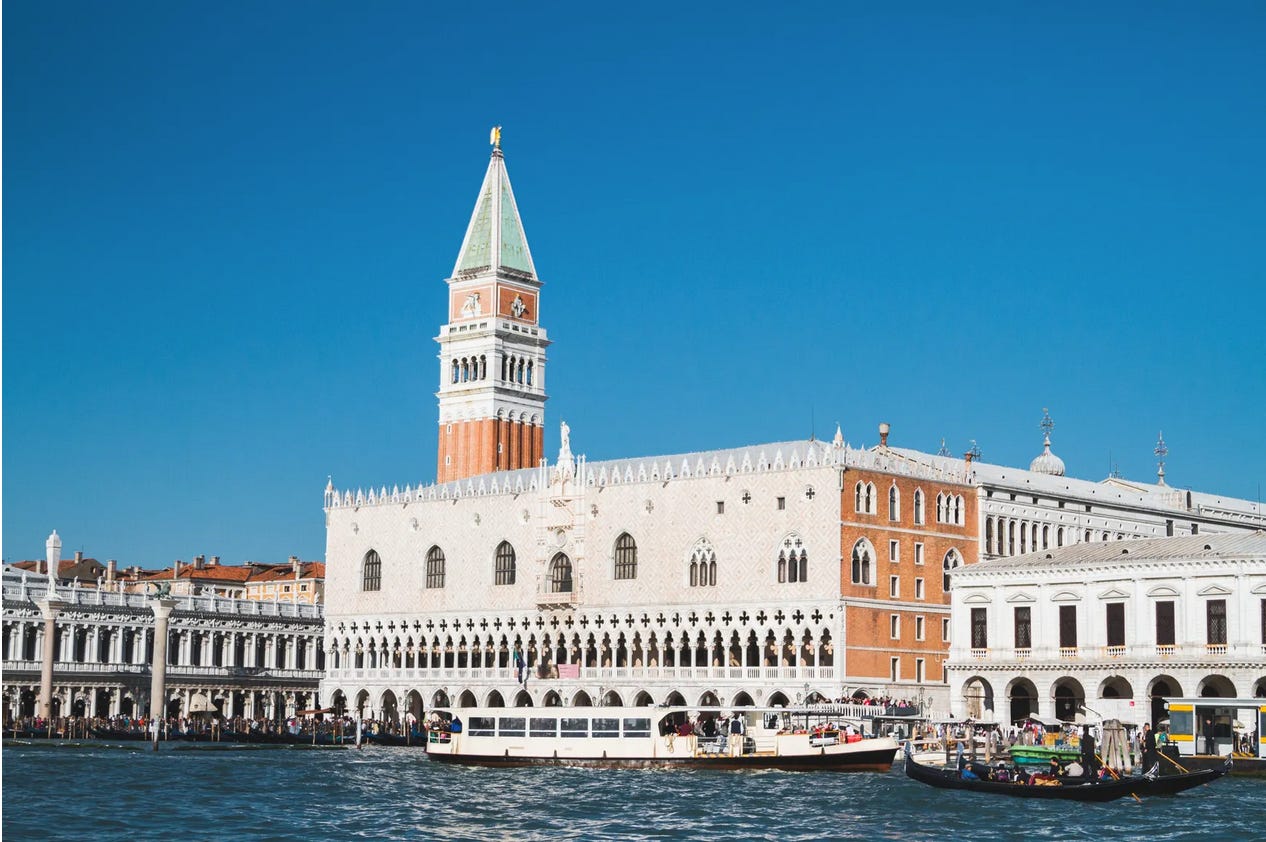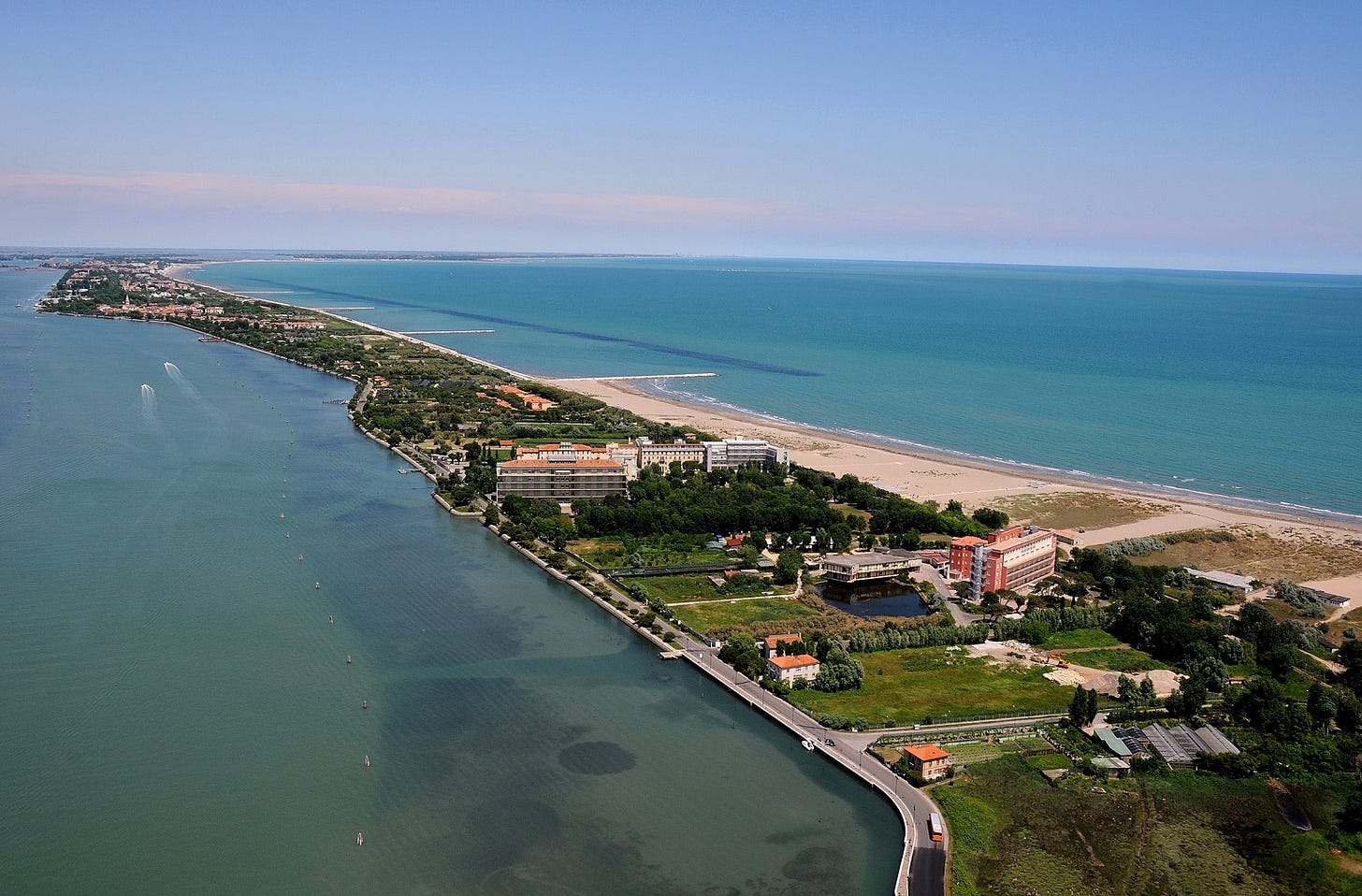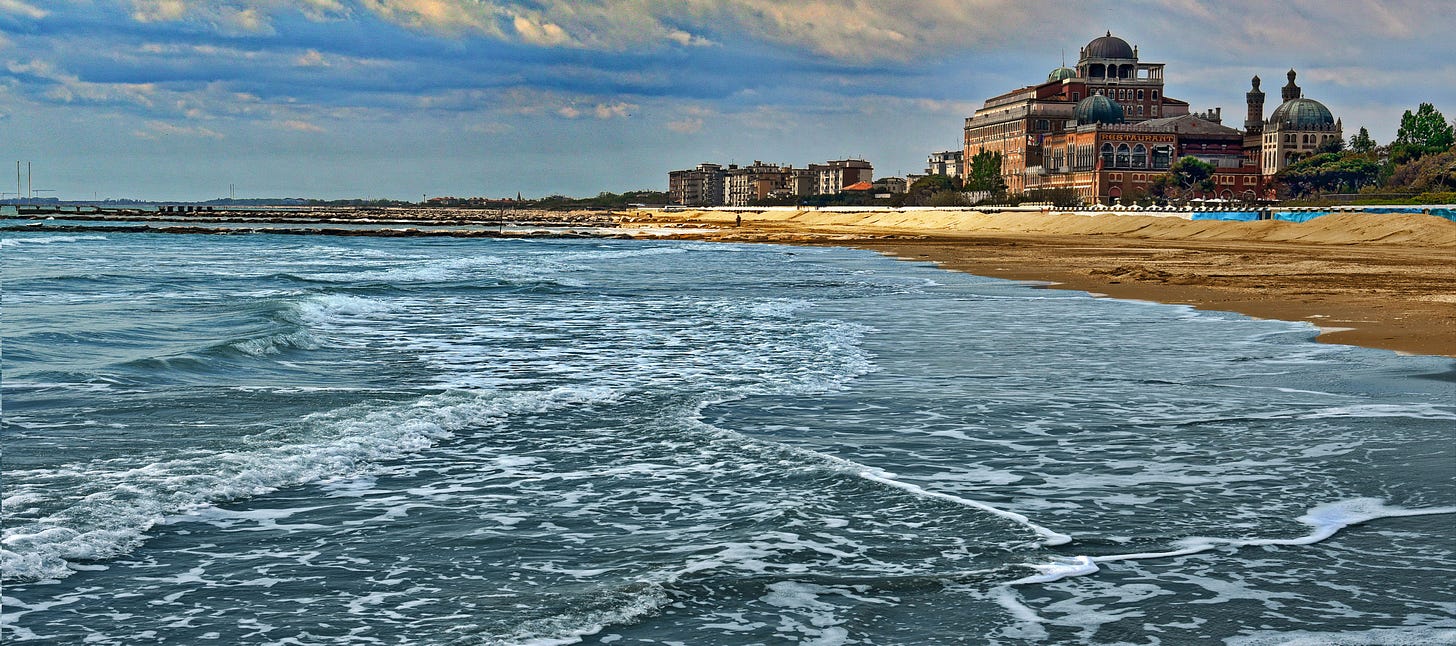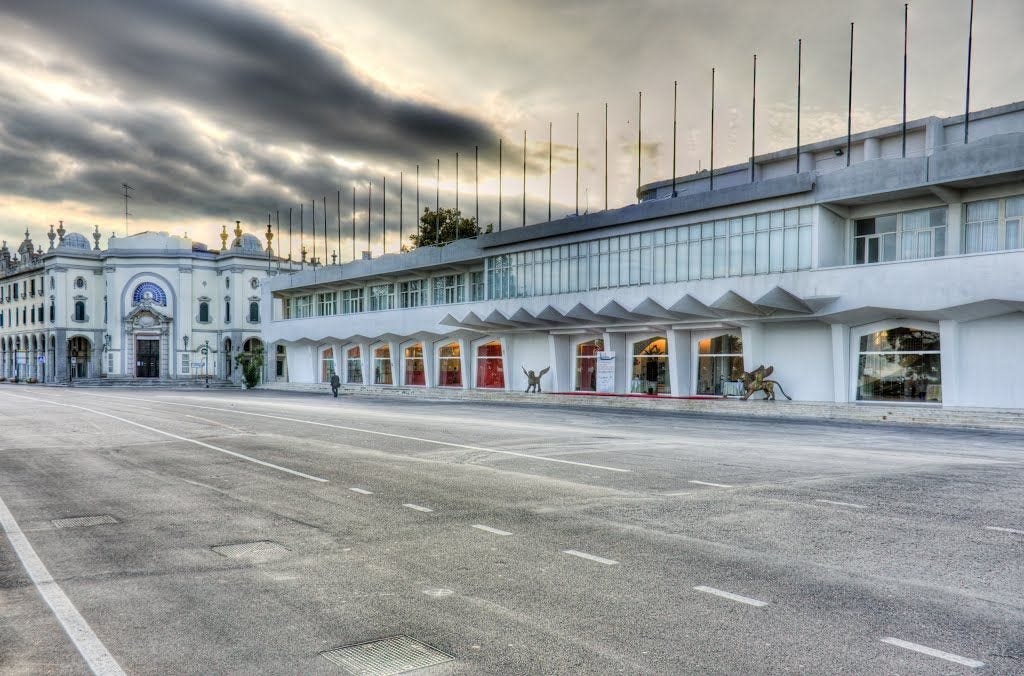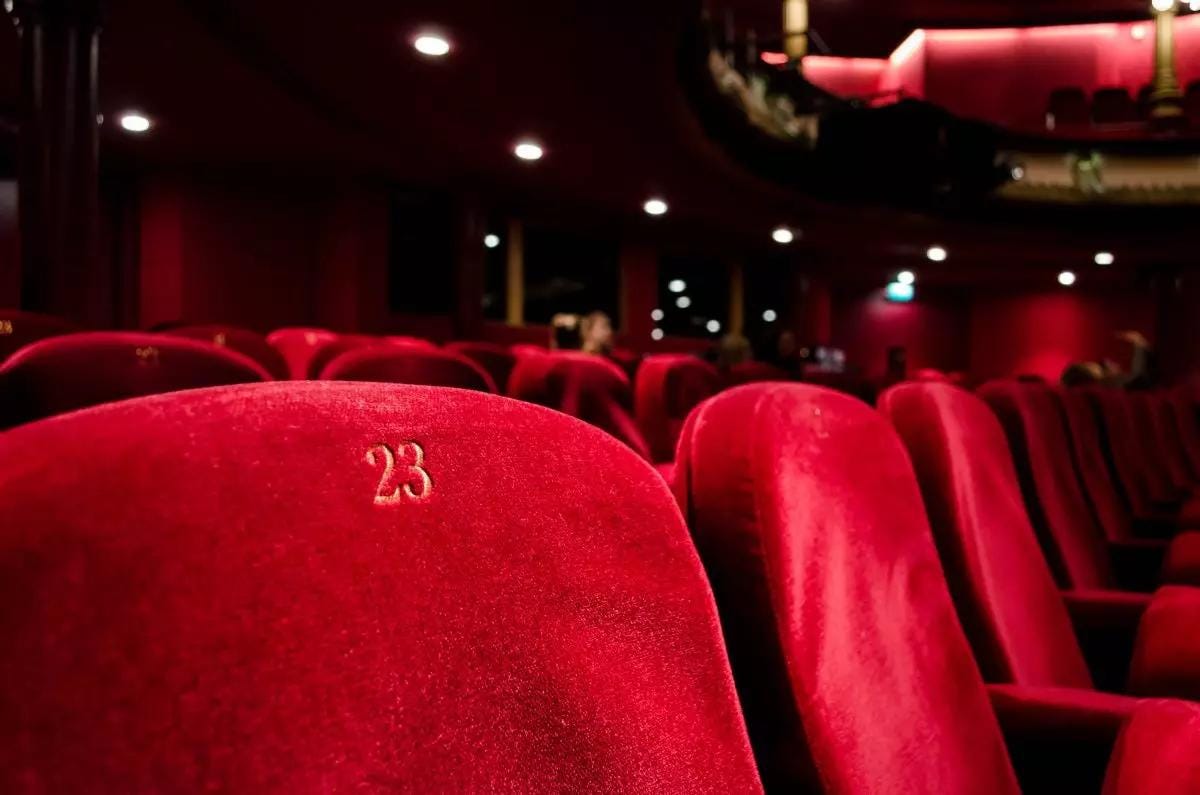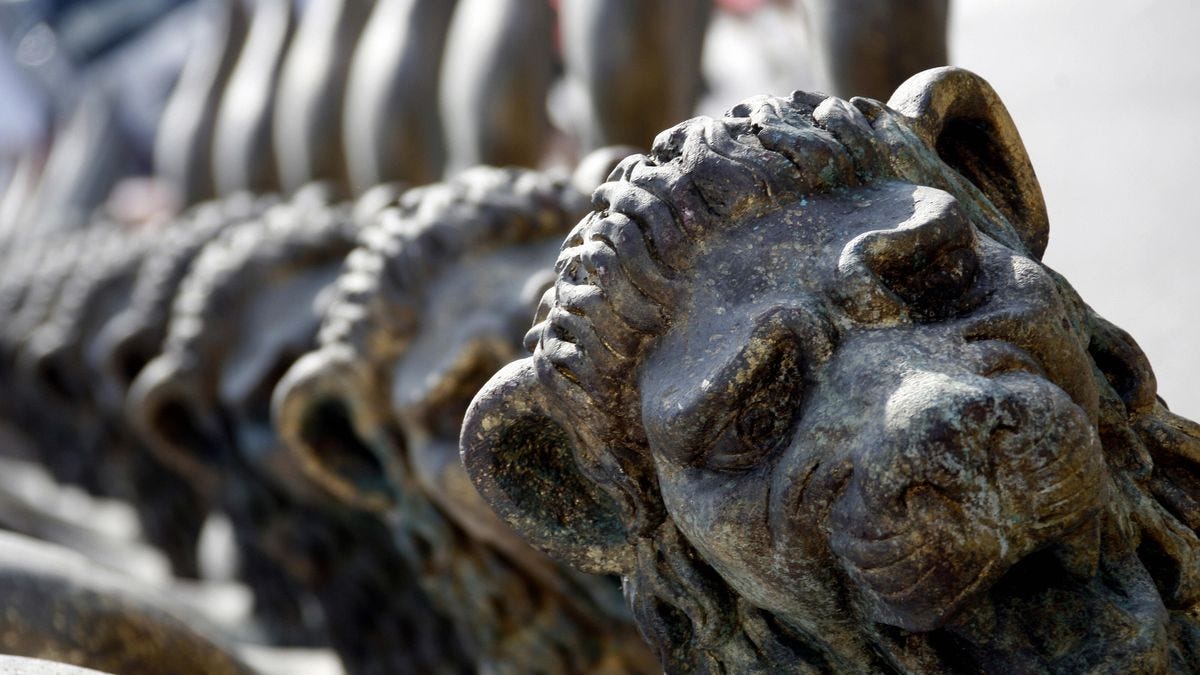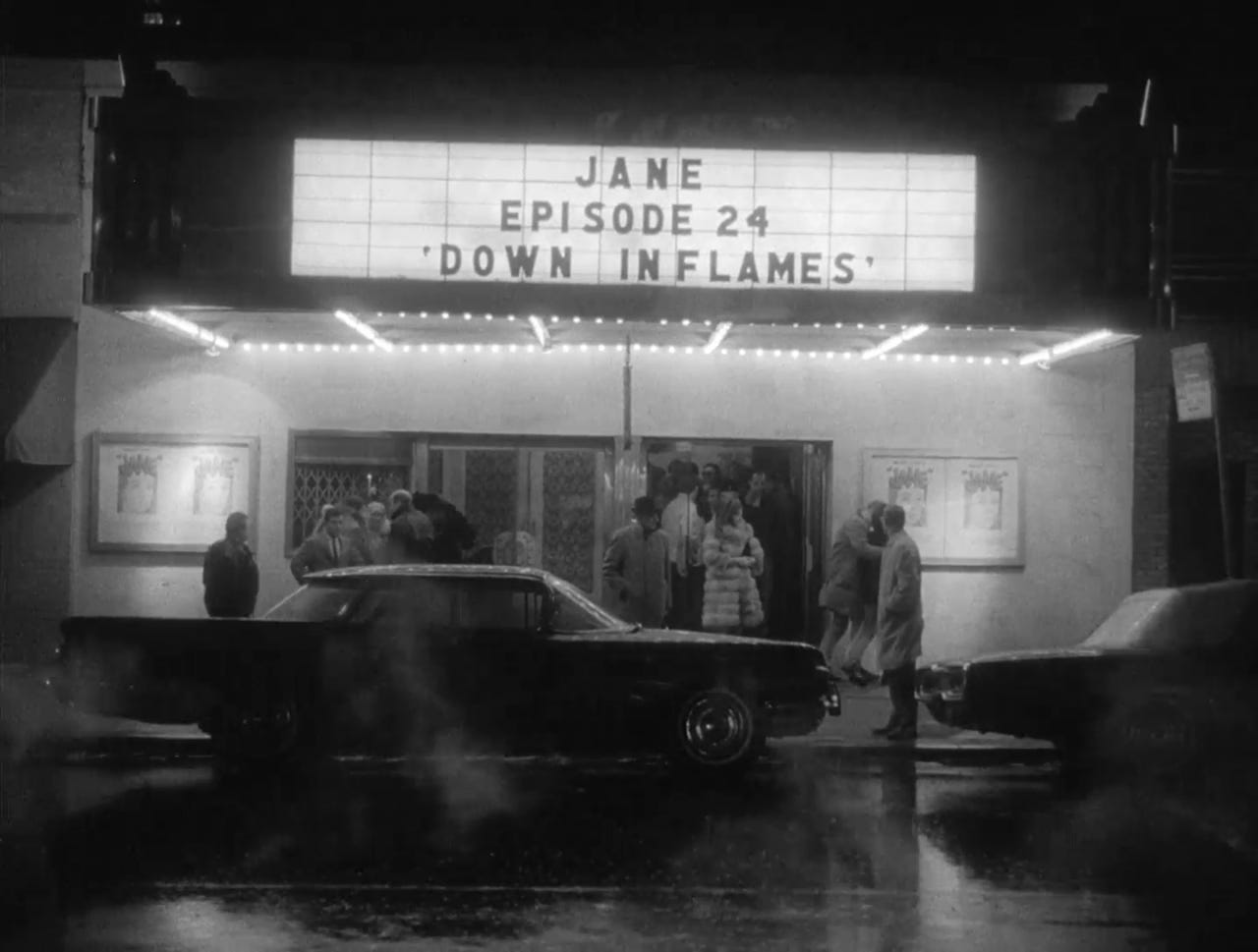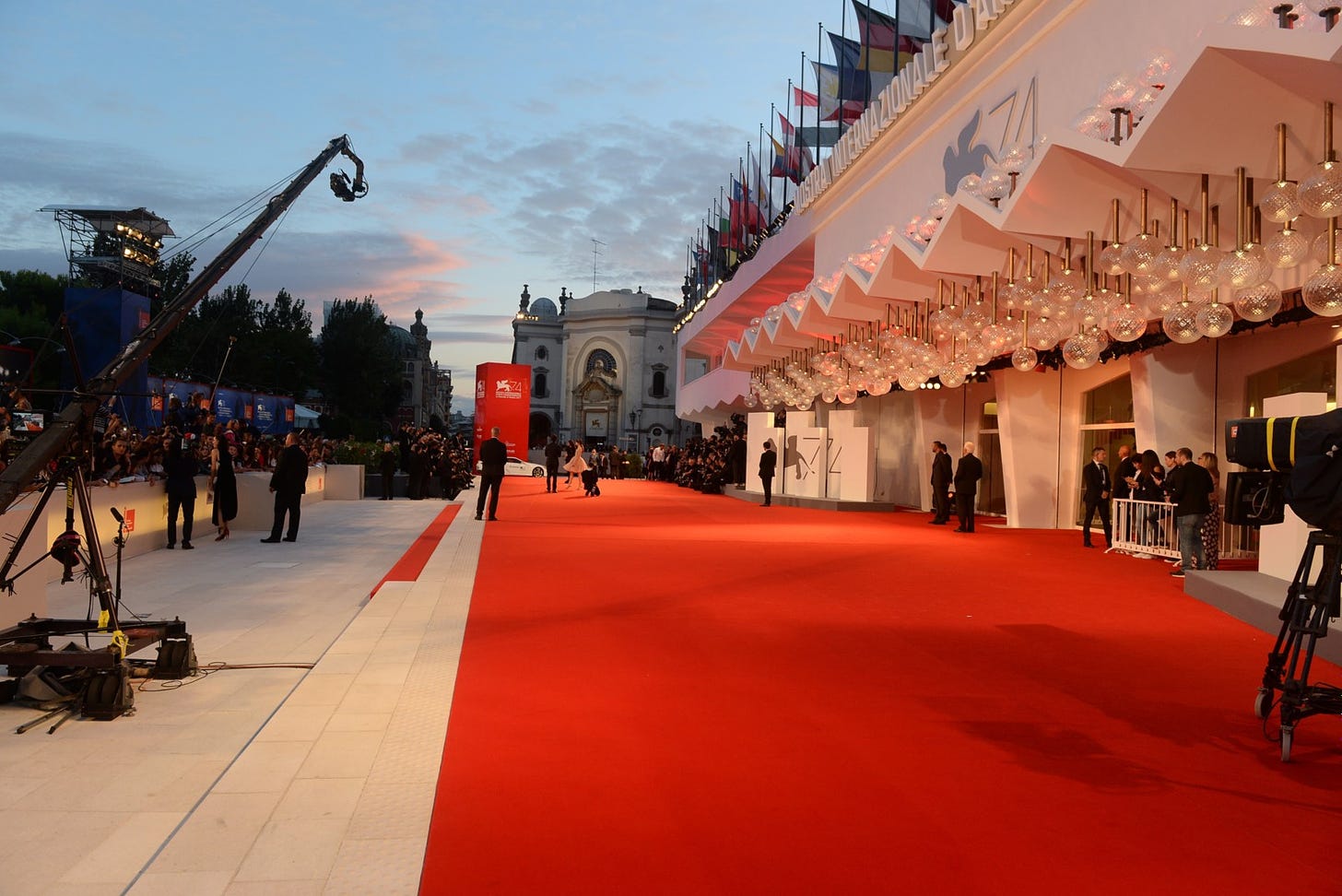I used to love going to the movies. From the black and white projections on Sunday afternoon at the parish we watched munching on a licorice roll, to the four-hour marathons of re-releases, to the open theaters in summer.
The lights dim, the screen comes to life, and so does the imagination. I grew up on character plots, where the interaction was mostly dialogue. And learned you can say a lot with a gaze and body language. We underestimate the value of the unsaid.
Movie making is an art. It can be the highest form of storytelling—visuals, movement, and sound came together to tell stories about our wishes and desires, but also the sorrows and despair of what it feels to be human.
Reminder: You can get extra insights—in-depth information, ideas, and interviews on the value of culture.
Join the premium list to access new series, topic break-downs, and The Vault.
According to Joseph Brodsky, the vertical lace of Venetian buildings is the most beautiful design that time, of which water is a metaphor, has ever granted to the mainland. It is as if space—aware of its inferiority compared to time—responded to Venice with the only property that time does not possess: beauty.
The transience of beauty and life is never so evident as in Venice. If there is then a hidden task that the Biennale can carry out, it is that of transforming this transience into circularity. Forcing beauty to happen periodically.
Art every two years. Architecture every two years. Then theater, dance, and music. And every year at the end of August, cinema. From August 30 to September 9 the International Film Art Exhibition (80ª Mostra internazionale d’arte cinematografica) graced the Venice Lido (not Film Festival.)
Because cinema can be a form of art. Venice is its oldest home.
“We went to bed at night knowing that we’d wake up in the future.”
B. Bertolucci, Before the Revolution (1964)
Luca Guadagnino’s “Challenger” was supposed to open the Mostra. Instead, it was Edoardo De Angelis’ “Comandante.” Hollywood had hoped its summer of strikes would end by Labor Day. However, the 11,500 writers who went on strike four months ago are not taking the ‘half measures’ proposed so far by the studios.
Frustration, fears about the future and a high degree of mistrust continue to shape the script. [LA Times]
The program was at risk. But Alberto Barbera and team were able to pull together a high-quality program, including the work of David Fincher, Sofia Coppola, Yorgos Lanthimos, Wes Anderson, Michael Mann, and more.
Most people overlook the very hard work of researching and selecting film directors—both known and unknown. The long days and nights, the international scope and network. Barbera has been director of the Mostra from 1999-2001. Then he returned in 2012 and expanded it.
“Film, too, has its seasons. Silent film was spring, the Golden Era was summer, the cinema of the 1980s and '90s was winter. Are we headed toward a new spring?”
D. Thomson. The Whole Equation: A History of Hollywood (2004)
Barbera calls this an interesting moment. Uncertainty is everywhere and it is projecting difficulties for filmmakers and film-viewers. Studios continue to bet on sequels with tired story lines and are seeing few blockbusters. Art-house and independent cinema are at risk.
The anxiety from real life events has become the new arena from which to seek escape. And yet…
even if the audiovisual industry is showing all its fragility, cinema is more alive than ever. The conclusion of the long selection process of the movies submitted to the Venice International Film Festival confirms this, despite the difficulties that were faced, this year, too. This confirmation is not only quantitative but also, and above all, in virtue of the quality of the harvest, to borrow a much-used metaphor. Established filmmakers expressing the best of their extraordinary creative skill; solid directors confirming their talent and their ability to interpret the present time and its apprehensions; debut directors hot on the heels of those who preceded them, as they trace new pathways to the future that awaits us; and a growing number of women directors, encouraging us to hope in a forthcoming and hoped-for gender equality.
Today, more than ever, the words Jean Epstein wrote in 1921 ring prophetic: “Film, like contemporary literature, accelerates unstable metamorphoses. Aesthetics change from fall to spring. People talk about eternal canons of beauty while two consecutive Bon Marché catalogues render these ravings useless.”
The program of the 80th edition of the Mostra it twofold: to reflect the vitality of contemporary film and help fuel faith in a future that contemplates daring challenges, but also opportunities and new frontiers.
In 2014, Alfonso Cuarón’s “Gravity” took home seven Oscars. What most people don’t know, is that the film premiered at Mostra in Venice. Seven people selected it to open the festival after having viewed literately thousands of films—16-hour days for 3 months. Media critics called their line up snobbish. The public loved it.

We tend to become complacent and often hold what we have with contempt. Italian media critics take for granted the taste due to the deep cultural heritage of their own people. It was the case with the 70th edition of the Mostra in 2014.
And again the following year, when 4 of the films selected to premiere in Venice went on to win Oscars. The story repeated in 2016, 2017, 2018, and 2019 with Oscars going to the films that premiered at the Mostra.
The idea is to get there before everyone else, to see where others have not seen yet. To understand if a film will become a guidepost for the season—and the time—ahead of the mainstream is a talent. Insight is part skill, part luck (or intuition, if you prefer.)
Cinema (and art) is not just about the winners. There are hundreds of films by unknown directors that find an outlet in Venice and that perhaps will change cinema in a not too distant future. Originality encounters resistance. Until it percolates culture.
Experienced movie critics form the selection panel each year. Collectively, they have a deep knowledge of cinema—history, techniques, and story lines—their feet rooted in culture, and their taste oriented toward emergent energy.
Then the group thus formed heads to Lido. Thomas Mann’s Death in Venice takes place not in the city proper, but in the Lido—an environment that evokes the transcendent.
There are no tourists here.
The entire island seems at the disposal of the committee. It would be like a dream, except for the work ahead.
Anyone can submit a film to the festival. You can look up the entry rules under film submission here. It’s a very democratic process that most people overlook. Two budding filmmakers and a smart phone can pay a fee and submit their film to the panel.
Submissions from all over the world run up to 1,500. Up to movie 250, it’s easy to feel lucky to get paid to watch films. Beyond that number comes the real work. Because each film has a chance—there’s no algorithm dictating what you see, you watch them all and discuss it on its own merits.
In addition to watching films all day and discussing them into the night, if you had a choice between having lunch and watching an entry, the committee would pick the entry. ‘No’ is the answer you’d get from a member of the selection panel for anything else.
It’s a forced seclusion that has its pluses. For example, the excitement of coming across a wonderful new director. Though there’s the concern that colleagues in Cannes are considering the very same film for selection.
Another bonus of focus on one task like watching films is that the worries and anxieties of the world outside recede. When writer Nicola Lagioia won the Strega Prize in 2015, he had to return to the Lido committee immediately.
Origins
1932 is the year of its first edition. Today, the main prize awarded by the Venice festival jury, the famous Golden Lion, along the Palme d’Or in Cannes and the Golden Bear in Berlin, is still one of the most coveted film awards in Europe and throughout the world.
Count Giuseppe Volpi, then president of the Venice Biennale, the sculptor Antonio Maraini and Luciano de Feo, general secretary of the International Institute for Educational Cinema were behind the first edition of the Venice Film Festival in August 1932.
Mussolini’s fascist regime approved the festival, convinced that this would help draw the international spotlight to the peninsula.
The Hotel Excelsior on the Lido of Venice was the location. In the beiginning, it was just a festival to present new feature films to the public. Greta Garbo, Vittorio De Sica and Joan Crawford paraded along the Lido seafront.
Competition was introduced from the second edition in 1934. Prizes included the Mussolini Cup, awarded to the best Italian or foreign film, and the Great Gold Medals from the National Fascist Entertainment Association.
Due to the enormous success, from the third edition on the festival became annual. In the following years they introduce new features such as the international jury and the Volpi cup for actors, which takes its name from the founder of the festival.
In 1937 the new Palazzo del Cinema was built by the architect Luigi Quagliata. It still hosts the Festival today.
Although many masterpieces were presented, the historical phase took place during fascism. The political pressures of the fascist dictatorship influenced and corrupted the results of the festival several times, so much so that even today many consider the editions of 1940, '41 and '42 as if they hadn’t happened.
From 1946, with the end of the war, the exhibition began to find its true identity. International artists returned to Venice and, from 1949, under the direction of Antonio Petrucci, the festival returned to occupy the Palazzo del Cinema, requisitioned by the allies at the end of the war, never to leave it again until the present day.
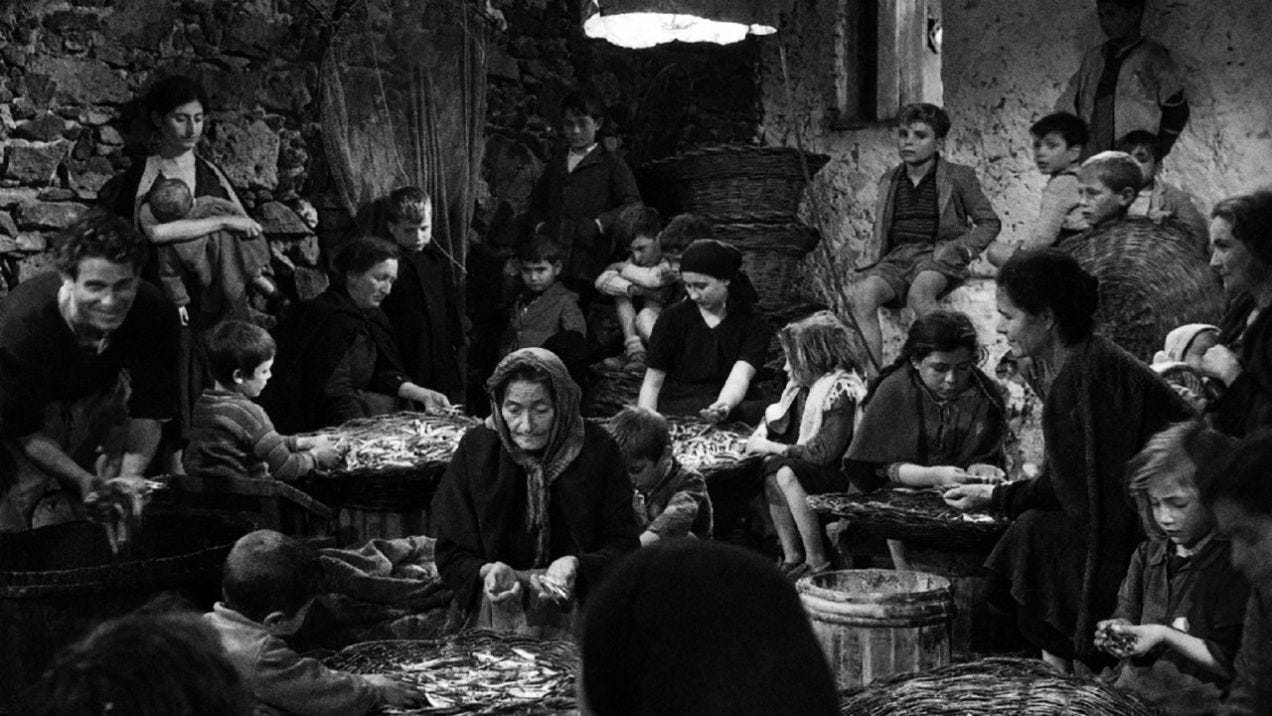
Unmissable films of the era:
“The Path to Life” (Путёвка в жизнь?, Putëvka v žizn') by Nikolaj Ekk
“The Grand Illusion” by Jean Renoir
“Siréna” by Karel Steklý
“Hamlet” by Laurence Olivier
“The Earth Trembles” (La Terra Trema) by Luchino Visconti
Divas and masterpieces: the golden years of the competition
In the 1950s, the Venice Mostra established itself as one of the most important film festivals in the world, despite the birth of other major film festivals such as Cannes, founded in 1946.
With the war just a bad memory of the past, the festival enters its golden years, establishing itself as an international showcase in the artistic and social fields. Thanks to the Venice Film Festival, the West discovers Japanese cinema through the masterpieces of Kurosawa, Inagaki and Mizoguchi.
In the 1950s two directors arrived on the festival screens who would make the history of Italian cinema: Federico Fellini and Michelangelo Antonioni.
European cinema reigns supreme in those years. Prominent figures discovered by the Italian public thanks to the festivals include big names such as Ingmar Bergman, Carl Theodor Dreyer, and Louis Malle.
New stars invade Venice. Marlon Brando and Brigitte Bardot, but also the Italians Sophia Loren, Gina Lollobrigida, Alberto Sordi, and Vittorio Gassmann.
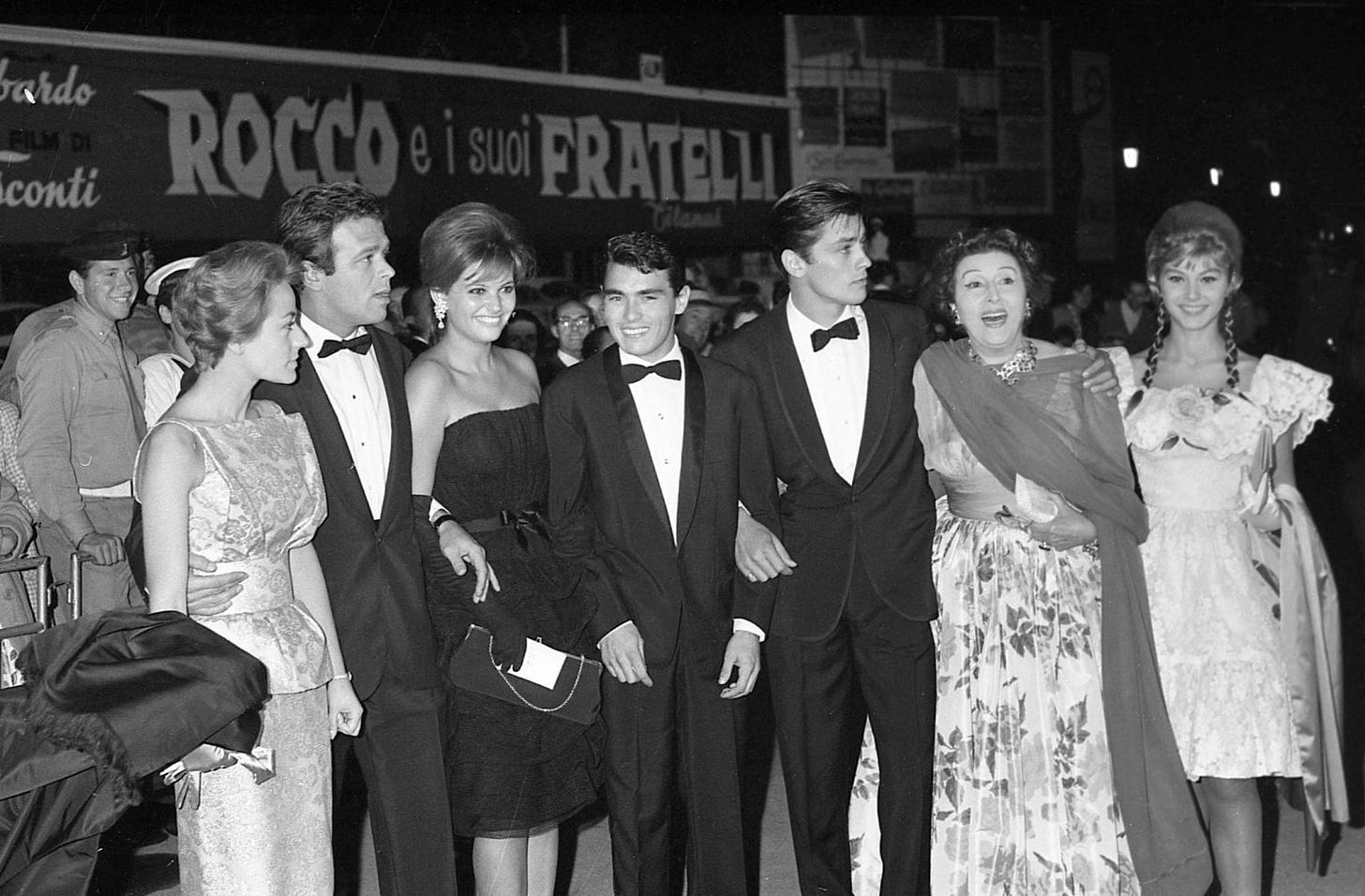
In the 1960s the festival became the promoter of a work of cinema renewal. They created various sections to promote all branches of the seventh art. It promoted movements such as the English Free Cinema and the French Nouvelle Vague, represented in particular by Godard and Resnais.
Directors Pierpaolo Pasolini and Bernardo Bertolucci make their appearance then. Italian cinema experienced a true golden age in this phase, thanks in part to emerging stars Claudia Cardinale, Marcello Mastroianni, and Monica Vitti. Between '63 and '65 Italian directors took home 4 consecutive Golden Lions.
Unmissable films of the era:
“Tales of Ugetsu” by Kenji Mizoguchi
“Ansiktet” by Ingmar Bergman
“The Lovers” (Les Amants) by Louis Malle
“The Great War” (La Grande Guerra) by Mario Monicelli
“Red Desert” (Deserto Rosso) by Michelangelo Antonioni
From the rebel '68 to novelty in the '90s
The political and social uprisings of '68 also had important consequences on the festival (still governed by the state of the fascist era.) From '69 to '79 the festival returned to being a non-competitive event, wigth no prizes awarded. The 1973, 1977 and 1978 editions were not even held.
1980 was the year that marked the return of the famous Golden Lion.
However, the interruption did not disrupt innovation. For example, in 1971 they introduced the Golden Lion for Lifetime Achievement, awarded to John Ford and Charlie Chaplin.
Through the difficult years of protest, the Mostra experienced struggled to reinvent itself. Its opponents even created an alternative festival, called Giornate del Cinema Italiano. Italian Cinema Days failed to replace the Venice Festival.
In 1979, the new director Carlo Lizzani decided to modernize the event starting with the name. From Mostra Internazionale d’Arte Cinematografica, to Mostra Internazionale del Cinema. He stripped the ‘art.’
Thanks to the direction of Lizzani, who fought to include intellectuals of writer Alberto Moravia’s caliber in the organization of the festival, the exhibition found new life and became a place for theoretical reflection on cinema.
The festival returned to its old competitive self in 1980. To celebrate the occasion, the Golden Lion was awarded ex aequo to Louis Malle and John Cassavetes.
In 1983, the direction went to Gian Luigi Rondi, who created the international jury made up exclusively of authors, first and foremost Bernando Bertolucci, to transform the festival into a “festival by authors, for authors.”
In 1988, the two new important sections were added to the Mostra—“Horizons” (still included today) and “Night.”
In the 90s, under the direction first of Biraghi, and then of Gillo Pontecorvo, the festival became younger—more space went to emerging directors such as Gus Van Sant, Spike Lee, Peter Jackson and, among the Italians, Mario Martone and Paolo Virzì.
Throughout the decade, the Venice film festival continued to be an international showcase, a place for the promotion of non-Western masterpieces difficult to access for the general public.
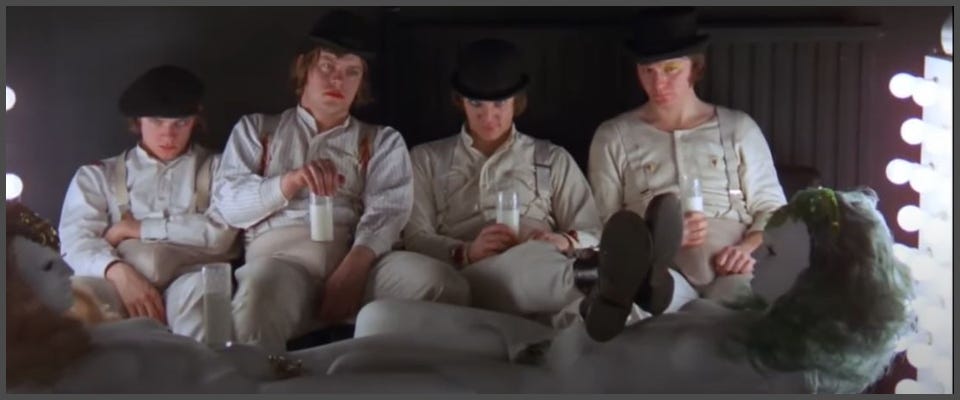
Unmissable films of the era:
“1900” by Bernardo Bertolucci
“A Clockwork Orange” by Stanley Kubric
“Gloria” by John Cassavetes
“Vive L’Amour” by Tsai Ming-Liang
“Brothers” (Fratelli) by Abel Ferrara
Y2k — 2000 on
The 2000s began with a major renovation. New locations were built and others were renovated. To facilitate travel and attract more visitors, the municipality also strengthened the connections between the city and the Lido.
New awards introduced include the Lion of the Year or the Lion of the Future. Though many will be canceled later not to distract from the main awards.
One of the most important events of this period is the posthumous screening of Kubrick’s last film, “Eyes Wide Shut,” which, thanks to Nicole Kidman and Tom Cruise attracted a crowd of curious people to Venice.
In recent years, jury presidents of great caliber have followed one another—from Monicelli, Gong Li, and Catherine Deneuve to Wim Wenders.
Unmissable films of the era:
“Boys Don’t Cry” by Kimberly Peirce
“Not One Less” (一個都不能少 T, 一个都不能少 S, yí ge dōu bù néng shǎo P) by Zhang Yimou
“Monsieur Ibrahim and the Flowers of the Koran” (Monsieur Ibrahim et les fleurs du Coran) by Omar Sharif
“Somewhere” by Sofia Coppola
“The Favourite” by Yorgos Lanthimos
In 2020, the economic and social crisis linked to the Covid-19 pandemic had profound repercussions on the world of cinema. The 77th edition boasted a very rich and heterogeneous selection. But a general atmosphere of uncertainty that characterized it.
“The winter of our bewilderment turned into a spring of anguish, and then slowly slipped into a summer marked by uncertainty and fear for a restless future.”
Alessandro Barbera, 2020
Due to Covid, many cinemas had to remain closed for several months. In some countries a year or more. Which pushed many production companies to postpone the release of films or to release them directly on streaming platforms such as Netflix, Disney+, and Amazon Prime. Works not included in the selection for these reasons excluded more than one director from the competition.
While cinemas remained closed, people got used to watching films from home. Several independent theaters had to close. Which could have drastic long-term ramifications on the film market.
As an international showcase of the seventh art, the Venice Film Festival is responsible for putting the big screen back at the center of spectators’ interests. Cinema is not only direction, critical review, and great works— audience experience is part of it.
Chloé Zhao’s film “Nomadland” took home the Golden Lion and a few months later won 3 Oscars, including best film, making Zhao the second director in history to win this title.
In 2021, Jury President of the main competition was South Korean director Bong Joon-ho, a first time for a South Korean director. “Happening” by by Audrey Diwan took home the Golden Lion.
In 2022, Noah Baumbach’s “White Noise” was the festival’s opening film, and Francesco Carrozzini’s “The Hanging Sun” was the closing film. American actress Julianne Moore was the Jury President of the Main Competition. Laura Poitras’ “All the Beauty and the Bloodshed” was the winner of the Golden Lion. It was the second documentary, after Gianfranco Rosi’s “Sacro GRA” (2013), to win the festival’s top prize.
Is now a good time for creativity?
Designer Michael Wolff says creativity is “the process in someone’s mind where there’s something there that wasn’t there before.” There are things you cannot explain, we hold them in our imagination.
In a short video, Wolff talks about three muscles:
inquisitiveness — noticing, questioning, curiosity
appreciation — taking in what’s there, what already exists
imagination — mix noticing how things are, and looking at how they could be different
What I think about watching this short interview is how much of our physical context signals the emergence and ego of “I’m here” vs. we’re in conversation. Even social media is designed to help users build monuments to themselves.
Cinema as an expression of imagination can tell a lot of collective and universal stories about us we’ve forgotten or overlooked. For that reason—and many more, including the beauty of art—it can ground culture while it projects new worlds.
Films can be made to be heard and seen, rather than to be ‘approved.’ The International Film Art Exhibition in Venice does the important work of bringing those voices to the fore.
__
Credits:
Nicola Lagioia was a member of the selection panel in 2014, 2015, and 2017. He tells of the experiences and behind-the-scenes in his podcast “Dentro la mostra del cinema di Venezia” at Lucy sulla Cultura.
Historical notes on the Mostra via Superprof.





